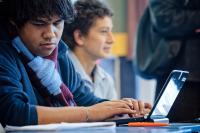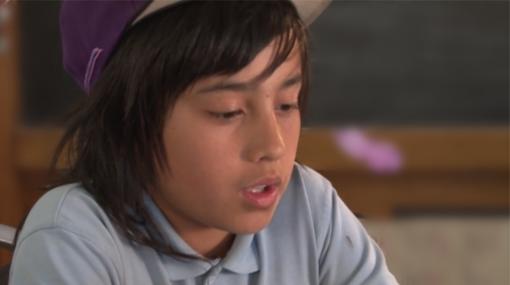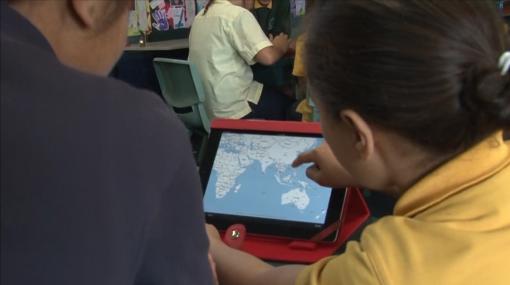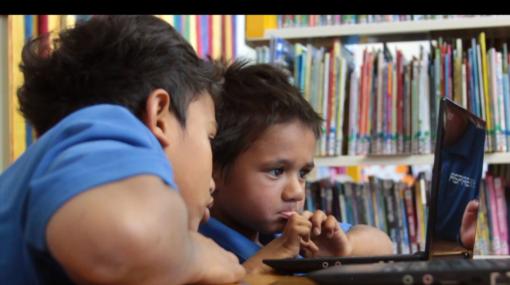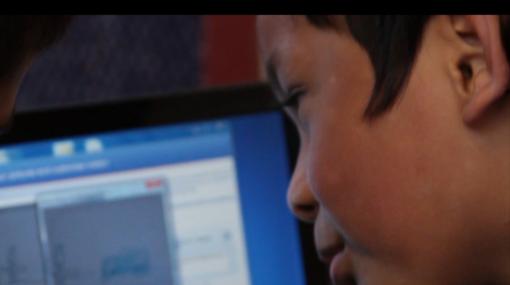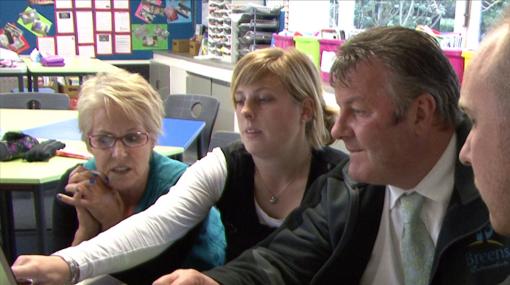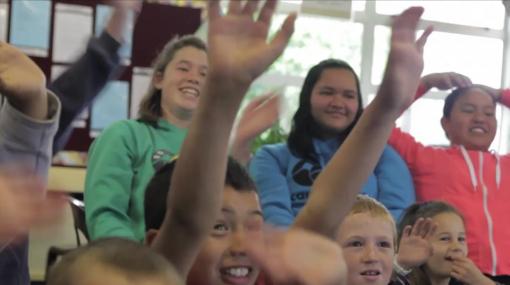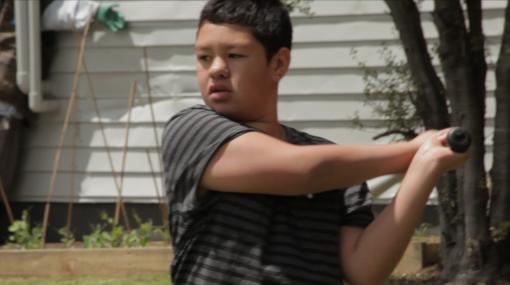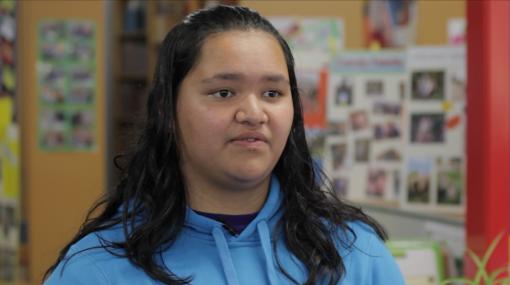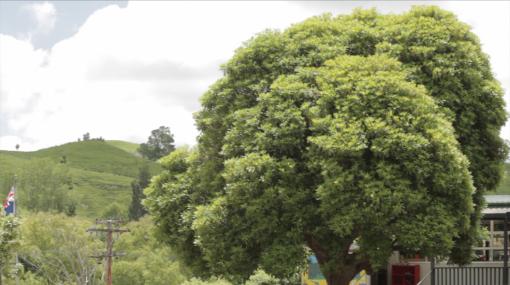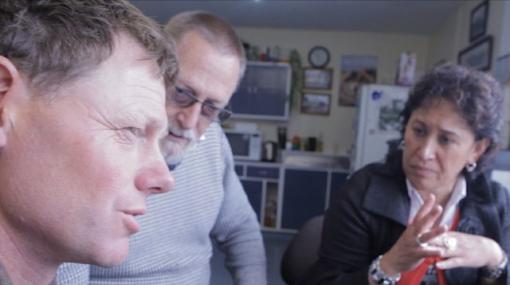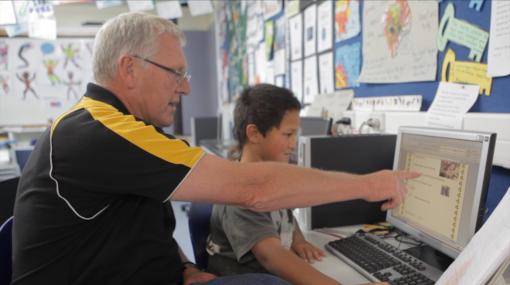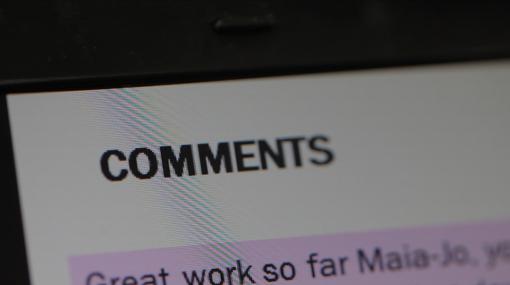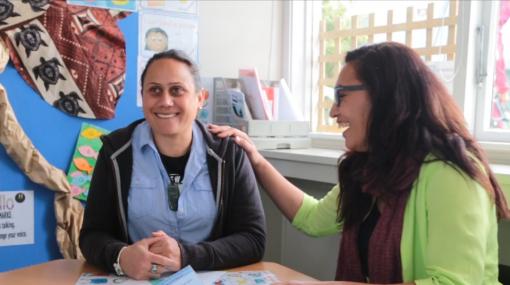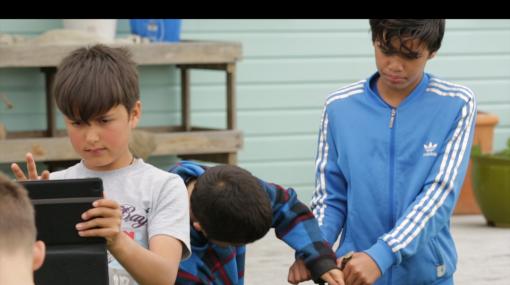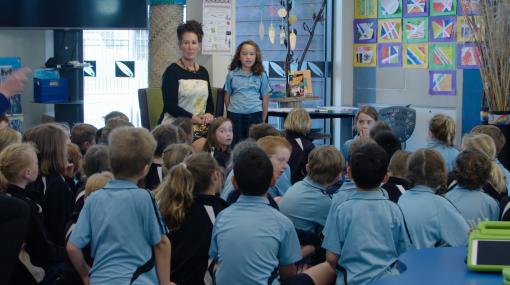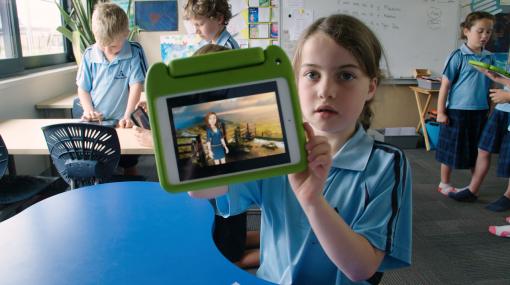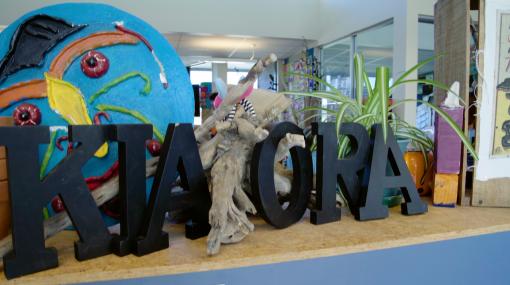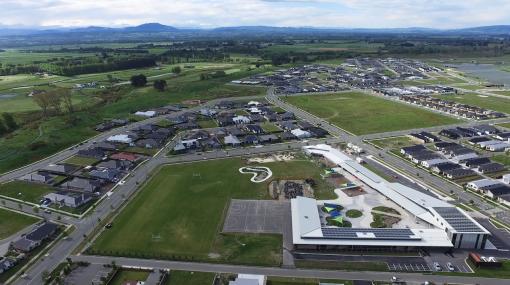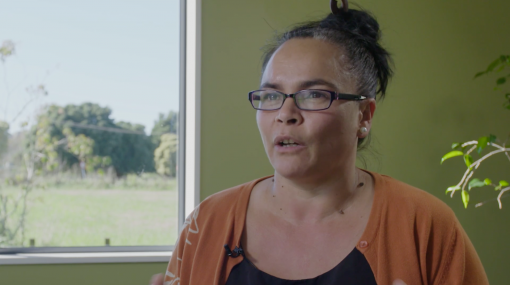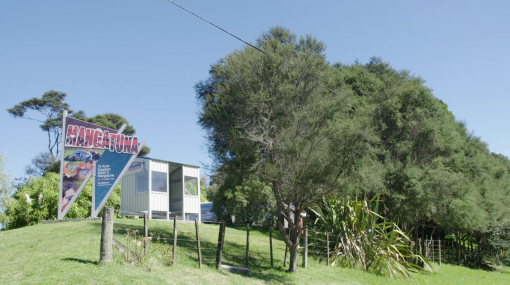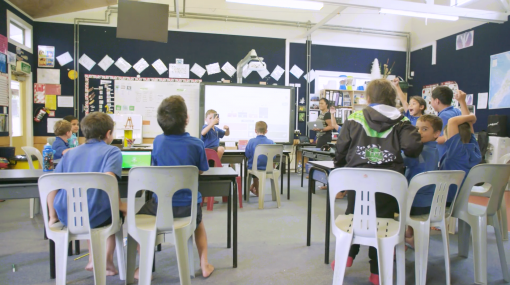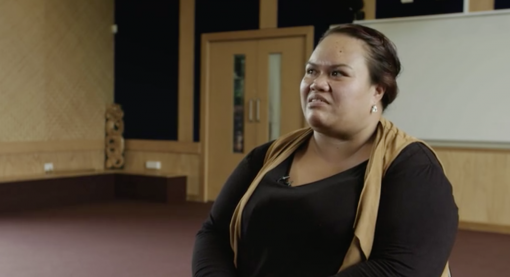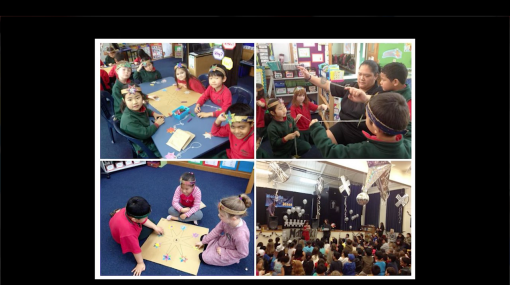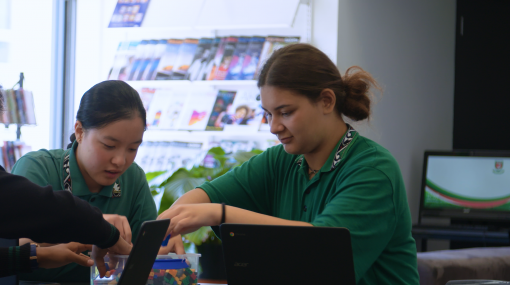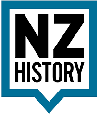Supporting ākonga Māori through ako-e (e-learning)
How can e-learning make a difference to ākonga Māori?
For ākonga Māori, e-learning can:
- offer flexible, inclusive learning opportunities – they can stay in more familiar social and cultural environments while pursuing continued and enhanced learning
- support communities to reconnect and learn their language and customs through the development and production of online learning resources
- create opportunities to engage with their cultural knowledge forms and practices.
Successful learning for ākonga Māori is founded on language, culture, and values. It builds on what we know to be effective curriculum and pedagogy in that cultural context. e-Learning approaches that are successful for Māori students work "within a Māori framework that emphasises and values" (NZCER, 2004 ).
- Create learning environments that are fit for purpose in the 21st century, which allow diverse learners more opportunities to stay engaged and achieve.
- Have high expectations for every learner.
- Know your students and apply that knowledge of their background, identity, language, and culture into what and how you teach, so they can "...participate in engaging, inclusive, and culturally responsive teaching and learning environments..."
Te Mārautanga o Aotearoa reminds us,
Te whanake o te ako-e
Ko te ako-e ko ngā akoranga ka whakatenatenatia, ka tautokona rānei mā ngā hangarau mōhiohio me ngā hangarau whakawhitiwhiti. He tino tikanga tā te hangarau mōhiohio mō tēnei tipuranga, nā reira he pai tēnei momo ako ki a rātou. Mā te ako-e:
Ka māmā te kimi mātauranga i Aotearoa, i te ao whānui, me te noho tonu i te kura, i te kāinga rānei.
Ka ako tahi ngā ākonga, ngā hapori.
Ka uru atu te ākonga ki ngā wheako rerekē, ki ngā wheako kei tua atu i te kura, i te kāinga hoki.The development of e-learning
e-Learning is learning that is encouraged and supported by information technology and communication technology. Information technology is critical to this generation and is an effective means of teaching and learning. e-Learning allows:
- easy access to knowledge in New Zealand and the wider world from the school or home
- the learner and community to learn together
- the learner to have varied experiences, and experiences beyond the school and home.
Key resources
Teachers as learners: Improving outcomes for Māori and Pasifika students through inquiry
These learning materials illustrate how teachers have used an inquiry approach to teaching to become more culturally responsive and to improve outcomes for their Māori and Pasifika students.
Tau Mai Te Reo | The Māori Language in Education Strategy (English)
Tau Mai Te Reo is the Māori Language in Education Strategy for all learners. It sets out the goals The Ministry of Education are seeking to achieve and provides a framework for coordinating our programmes and services that support Māori language in education.
Ka Hikitia – Kā Hapaitia
Ka Hikitia – Kā Hapaitia is a cross-agency strategy for the education sector. It sets out how The Ministry of Education will work with education services to achieve system shifts in education and support Māori learners and their whānau, hapū and iwi to achieve excellent and equitable outcomes and provides an organising framework for actions.
Tātaiako – Cultural competencies for teachers of Māori learners
The five dimensions will underpin and be woven through the design of what is learned (curriculum), how it is learned (pedagogy), why it is learned, and the way that ICT is integrated. This includes the way whānau and iwi are involved in the learning.
Where to start?
Get to know your Māori students and what is important to them. Start with students' culturally-located needs and strengths.
"Effective teaching and learning depends on the relationship between teachers and students and students' active engagement."
Teachers from Pegasus Bay School discuss how students learning their pepeha, rakau games, waiata, and karakia has created a culturally responsive environment where tikanga Māori is celebrated and valued. Teachers work hard to connect with whānau. Student work is shared through classroom blogs. Teachers have organised workshops using parent and whānau expertise with harakeke weaving leading up to matariki. Feedback from whānau has been positive.
Sharing mihi
- Create ongoing opportunities for students to share where they are from, what is important to them and why.
- Provide students with the tools and supports they need to develop and share their mihi, supported by their whānau.
Students at Burnham School found the process of creating and sharing a mihi, which involved engaging with their families and the community to research into their past and using technology to share that with their parents/whānau for feedback, a valuable learning experience.
Making connections to students' experiences
Susan Lee, teacher at Te Kura o Kutarere shares how using Storybird , a free digital story writing tool, in her classroom has made a significant impact on the literacy development of her students. She describes how students have become self motivated and proud of their work. Her curriculum decisions about narrative writing model ako driven by literacy data and information on achievement, rather than assumptions about what they can/can’t do. Conversations are located in the learning (wānanga).
Planning is based on Susan knowing her learners and wrapping the learning design around who they are and where they are from. The literacy is grounded in local stories from Opotiki and the kura’s place-based curriculum. The student in the video clip makes these connections when he says, “It's about Māori people and dragons and stuff and yeah, it's Maui. He put on a meeting for all the people of Opotiki.”
This approach allows students to:
- bring their prior knowledge (ako)
- work reciprocally, learning by modelling, watching, and doing
The technology (Storybird on laptops) supports the local focus, the reciprocal nature of the activity, and the different strengths and needs of the students.
Integrating local Māori contexts into learning
Use local Māori contexts (such as whakapapa, environment, tikanga, language, history, place, economy, politics, local icons, geography) to support Māori learners’ learning. Integrate knowledge of local context, tikanga, history, and language – including the prior knowledge that ākonga bring with them.
Yvonne Nikora, Deputy principal at Waerenga o Kuri School describes her approach to creating a digital story with her students, focusing on their turangawaewae. Successful planning for learning is underpinned by Yvonne connecting with her students and building relationships so they can achieving success as Māori.
Key planning considerations included:
"This process has empowered our students."
- finding out from students what they would like to look at
- using a tuakana-teina approach to learning and teaching
- providing choices for students
- an authentic learning context, that had meaning for her students
- utilising digital technologies to create and share their learning.
Teaching te reo and tikanga Māori
Te reo Māori is taught and used daily in the classrooms at Pegasus Bay School. Teachers agreed to plan 15 minute instructional lessons to make it manageable. They also include daily karakia, music, and games and identify features of their learning environment that reflect the culture of their learners and provide prompts to support using te reo Māori.
Teachers from Pegasus Bay School describe how they use digital technology to support the teaching of te reo Māori. In particular, they talk about the apps Tellagami, Explain Everything , and Kahoot!
Assessment
Te reo Māori: An online language assessment, Years 4–9
Te Reo Māori is an online assessment that enables students to demonstrate their knowledge of te reo Māori vocabulary. The assessment is for English-medium schools. Te Reo Māori compliments Taku Reo student perception survey, both available on NZCER Assist .
Using technologies to support learning and collaborating
Use digital technologies to create a collaborative learning environment. Identify tools that enable students to share their learning with you, other students/akonga, parents, and whānau.
Teacher, Mihi Morunga, and students describe the process of creating iBooks and the benefits these have in the learning process. Students are reseraching, being creative, working using their own language, and sharing the knowledge they have made. Once completed students can share their books with whānau. Having work accessible online allows parents and whānau easy access to what their child is doing, and supports them with being involved in the learning.
Irongate School has a focus on improving student literacy levels particularly for their large population of Māori and Pasifika students. The tuakana-teina relationship, an integral part of traditional Māori society, provided the model for the buddy system they are using. The older or more expert tuakana (Year 5/6 students) help and guide the younger or less expert teina (new entrant students). Using Photostory, Year 5/6 students teach their younger student buddies the techniques involved in both creating and self monitoring their work. These stories are now reading material for the students.
Teachers and students at Finlayson Park school share how using technologies is benefitting student learning in the classroom. They describe the flexibility it provides for learning and some of the websites they use for teaching te reo and tikanga Māori.
Bridget Harrison's class at Kimi Ora Community School is made up of 100% Māori and Pasifika students. Many of the students have English as a second language. In this video Bridgit explains how they are using digital stories to scaffold the writing process. The success of this approach is reflected in their asTTle writing data showing students making a year's progress in two terms.
Taking an inclusive approach
Paul and Shelley Cornwall describe the changes they made to their teaching approach at Motu School. The Māori achieving success as Māori (MASAM) document gave them a starting point. Taking an inclusive approach, considering students' cultural backgrounds, and incorporating te reo Māori across the school curriculum has impacted on student learning. They have used digital technologies to support learning and connect with parents. Their change in approach has given students ownership of their learning.
Find out more about Māori achieving success as Māori »
Using technologies to engage parents in student learning
There has been recognition of the importance of reciprocal two-way communication to enhance the understanding of student backgrounds and learning needs; to consult with parents, whānau, and communities on school priorities; and to engage in collaborative goal setting.
Partners in learning: Schools’ engagement with parents, families, and communities in New Zealand
As a result of deliberately creating programmes where the parents can come and join in with their children’s learning, parents feel welcome and included in their child's education. Student, Herepo Wynyard talks about how the involvement of her whānau both online (through her e-portfolio) and face-to-face at school has encouraged success with her learning goals.
Using technologies to support communication
Examples of ways you can use technologies to support communication with parents and whānau
- Leave computers on at the end of the day and invite parents and whānau to view students’ digital work
- Find out the types of technology that parents and whānau use and share in those mediums.
- Consider using multiple channels, such as mobile devices, email, instant messaging services, social media, and the school website, to connect with parents and whānau.
- Provide deliberate support or training to show parents and whānau how they can engage with students’ work, both face-to-face and through technology.
- Create and promote online spaces such as blogs that invite parent and whānau participation and feedback.
- Establish a site or portal for parents and whānau to access and contribute to student learning.
- Design e-portfolios to inform future steps in learning..
Dave McShane (principal), Susan Lee (teacher), and kaumatua from Te Kura o Kutarere discuss how technologies have helped to engage their local community to support and share students learning.
Using digital portfolios
e-Portfolios and three-way student led conferences help parents to develop a deeper understanding of how their child is progressing and how they can support learning.
- Involve whānau in learning-focused discussions (wānanga).
- Actively engage Māori learners and whānau in the learning partnership through regular, purposeful feedback, and constructive feed-forward.
Parents willingly came into Motu School to help out with fundraising and sports activities. Setting up e-portfolios and making them part of three-way student led conferences enabled parents and whānau to engage directly with their children's learning. They have a deeper understanding of where their child is, what their learning goals are, and their next steps.
Using technologies to support parent voice within the school
Review your school’s localised curriculum with parents and whānau.
Ask:
- Where are the voices of whānau in this curriculum?
- How does the curriculum fit the students and the graduate profile? (or do they have to fit into it?).
The board of trustees, parent community, and school leadership team at Waerenga O Kuri School explain the collaborative process they used for developing their Māori achieving success as Māori (MASAM) framework. The result has been a real community partnership to include parents improve student learning outcomes in a culturally responsive and inclusive manner.
Parents, teachers, and the board of trustees at Waerenga o Kuri share their perspectives on the partnership that has been built based on the Māori achieving success as Māori (MASAM) framework they developed together. The school curriculum is very localised, flexible, and caters for the community.
Supporting learning at home
- Meet face-to-face to model particular strategies with parents, introduce a video to model a particular strategey or approach that can be re-watched.
- Create opportunities where students can draw on the expertise and experience of their whānau and work together on a project, for example creating a mihi.
- Maintain a class blog or weekly email to whānau, where you and students share the class learning, and encourage whānau to share their knowledge.
Sylvia Park School learning advisor, Ariana Williams explains the importance of connecting with parents to support student learning. She explains, "the purpose of Mutukaroa is to enable parents to understand the student assessments that we do at school. What used to happen is that parents didn’t use to see that sort of information, so our goal is to make sure that parents from Year 1 to 3 get to see every assessment that their child undertakes at school."
More information »
Connecting with your local marae
"Having the kids learning on the marae, knowing their tikanga, their te reo, and using the iPads and bringing it into the school, into the home, I just find that really good for everyone."
Access and capture the expertise that Māori parents, whānau, hapū, and iwi offer. Connect with your local marae. See if you can use this as place to meet with parents, whānau, and the local community. When you engage with parents and the local community, find out how they would like to share their knowledge with students.
Teachers at Coastal Taranaki School setup Te ika unahi nui wānanga – A marae-based learning programme with their local community. They met at their local marae. Parents and whānau shared their tikanga and te reo with students in an authentic context. Learning was hands-on and engaged the students. Students used iPads to record, process, and create stories about their learning to share with their parents and peers.
Te Ika Unahi Nui is a wānanga (learning) which is based at Puniho Pā, Tarawainuku marae in Okato Taranaki. The wānanga is a partnership between the marae, Coastal Taranaki School, and the local community. Facilitator, Jason Ruakere, students, and teacher, Chris Luke talk about the difference marae-based learning supported by digital technologies has made to students confidence and identity.
School stories
Relationships are at the heart of learning. These stories demonstrate how e-learning tools can be used to build relationships and engage with Māori learners, whānau, and iwi. e-Learning tools provide new opportunities and contexts for personalising learning with Māori learners to ensure they enjoy success as Māori.
Filter by: MASAM Cultural responsiveness Personalising learning Whānau engagement Inclusion Tuakana-teina Collaborative learning Digital stories Literacy
Sorry, no items found.
Snapshots of learning
Snapshots of learning are examples of effective classroom practice describing the use of digital technologies to support learning and teaching, with links to supporting resources.
Sorry, no items found.
Classroom teaching resources
Kauwhata Reo is a central online hub for te reo Māori resources to support the growth of teaching and learning te reo Māori. The hub can be viewed in te reo Māori or English.
Bilingual signage
Dictionary of New Zealand Curriculum | Paekupu
Put in a word or term, it is translated into te reo Māori and supporting information is included along with the word in sentences.
The Māori Language Commission | Internet resources
Downloadable booklets and posters with everyday and curriculum based words and phrases – including, Kia kaha te reo hangarau! – Language of technology, give it a go!
Agile in te reo Māori
Some words used to describe the Agile approach in design sprints developed by Te Papa.
A dictionary of Māori computer and social media terms: English – Māori
This is a specialised dictionary, compiled by Karaitiana N Taiuru (3rd edition 2016), contains a comprehensive list of Māori language that concentrates on technology. The dictionary is a downloadable PDF.
Māori-English bilingual signage
Māori-English Bilingual Signage: A guide for best practice is a downloadable resource produced by Te Puni Kōkiri and Te Taura Whiri i te Reo Māori. It contains information to support an inclusive process for planning, developing, and placing bilingual signage in public and workspaces.
Waitangi Day
Te Tiriti o Waitangi
This comic in the School Journal Story Library provides a fresh approach to the story of Te Tiriti o Waitangi, New Zealand’s founding document. It covers a wide time span, from the arrival of Polynesian explorers to the signing of Te Tiriti, to the New Zealand Wars, and through to the modern-day Treaty settlement process. A special emphasis is put on unpacking the two versions of Te Tiriti and exploring their ongoing significance. Access an audio, text, and downloadable PDF version of the comic book.
Waitangi Day – how will you commemorate?
Online resources compiled by NZC Online.
He puka mahi Rā o Waitangi: Waitangi Day activity book
A free downloadable activity book developed by Te Papa to help primary-aged children understand the significance of Waitangi Day. Learn through maps, flags, word puzzles, drawing, and colouring in.
Māori language week
Te Rangaihi Reo Maori | The Movement
Information about Te Rangaihi Reo Māori and Te Wiki o te reo Māori, with resources and ideas for learning te reo.
Māori language week
Te wiki o te reo Māori information and links to resources from NZC Online.
Te Kupu o te Wiki (word of the week). Register for Kupu o te Rā and you will also receive Te Kupu o te Wiki every Monday. A full list of words, and recordings of pronunciation, for the Te Kupu o te Wiki/Te Kupu o te Rā, a 50 week programme, teaching you 50 Māori words over 50 weeks is available from Te Kupu o te Wiki /Te Kupu o te Rā .
Story: Te reo Māori – the Māori language alphabet
An interactive from the Te Ara website to support pronunciation of the Māori alphabet.
Māori language week – NZ History
History of Māori language, Māori words every New Zealander should know, Māori place names, and more information to support learning.
Te Wiki o Te Reo Māori – Māori Language Week
Online resources and supporting student learning from Christchurch city libraries.
Matariki
Watch Seven Stars of Matariki author Toni Rolleston-Cummins read her book on this YouTube clip. This video was made by Wellington City Libraries in association with Huia Publishers.
Levels 3 and 4 cross curricular units that explore a variety of mathematics ideas in the context of Matariki. The sessions in each of these units can be run as individual activities, and most of them could be adjusted to suit different curriculum levels.
A guide from Te Ara providing pictures and instructions for locating Matariki at night.
A YouTube clip demonstrating how to create stars from ribbon. A simple activity, which can be done in the classroom.
Downloadable resources from TePapa, which include:
- information about the relevance of Matariki to Māori
- practical activities relating to the themes of kaitiakitanga (guardianship), musical instruments, and Māori cloaks
- Māori vocabulary lists to extend your students’ reo Māorireo Māori Māori languageMāori language.
Cross-curricular classroom activities from the NZ History website.
A list of activities and resources compiled by NZC Online.
A comprehensive list of resources compiled by Christchurch City Libraries. It contains resources to support Arts, English, Social Sciences, and Science.
Newmarket School teacher, Reubina Irshad talks about how they invited Māori whānau into the classroom during Matariki celebrations to teach students about Matariki. The class created an e-book explaining how Newmarket School celebrate Matariki.
Interactive games and Apps
12 Huia Birds
George Henare brings the tale of the huia to life in English and Te Reo Māori through a partly animated, partly illustrated story. Comes with printable supporting materials. This is available as a free download from the iTunes store.
Te Whata Raki
Students learn about some traditional stories, told through waiata, pictures, and other web resources. A Christchurch city Libraries resource.
Milly, Molly Māori library
The Milly Molly series of books is now in te reo Māori. These books relate the adventures of two little girls from different ethnic backgrounds with their multi-cultural friends. The books have been written to promote the acceptance of diversity, sound values, and the learning of life skills, ”We may look different but we feel the same.” This iPad app, will download as an empty bookshelf. Users can browse and download free books from the library. The app has a range of built-in supports, such as options to highlight the text, touch a word to hear it read aloud, and the ability to record your own narration.
Ruaumoko: The rumbling voice
An interactive digital book narrated by deaf Māori students in Te Reo Turi and New Zealand Sign Language. This narration is supported by text and audio in Te Reo Māori and English.
Whakaata Māori This includes a section on haka and programmes in te reo Māori for children.
Teaching te reo Māori
Teachers from Pegasus Bay School share how they incorporate te reo Māori into the classroom – in particular through karakia, pepeha, music, and games.
Reo Māori
Practical activities and resources to support learning te reo Māori, pronunciation, and tikanga Māori, from the Māori Language Commission.
Te reo Māori in English-medium schools
Information and resources relevant to the teaching and learning of te reo Māori in English-medium schools, in this TKI community.
He Reo Tupu, He Reo Ora
Resources for teaching Māori language effectively in the classroom, including: unit plans, resources, videos, and reomations. A TKI website.
Te Whanake
A set of textbooks, study guides, CDs, teachers' manuals, and a dictionary for learning and teaching Māori language. This website also provides access to a further range of associated free online resources for independent learning and interaction.
Ka mau te wehi
Ka mau te wehi is based on levels 1 and 2 of the draft Te Reo Māori in The New Zealand Curriculum. The resource contains 20 units of work, each having a distinct theme providing opportunities to learn and practise new language. The units are made up of a number of activities based on video clips, which support and guide the teacher when working with students.
Māori dictionary online
Look up words, phrases, and proverbs in Māori.
Paekupu
An online dictionary relating to the learning areas of Te Marautanga o Aotearoa. Words relating to all areas of the Ngā Toi curriculum are uploaded into the dictionary. Other curriculum areas will be added starting with Te Reo Pāngarau late in 2017, then Te Reo Matatini and Te Reo Pūtaiao in 2018. The long term goal is to include all the learning areas of the curriculum.
Story: Te reo Māori – the Māori language alphabet
An interactive from the Te Ara website to support pronunciation of the Māori alphabet.
Story: Te reo Māori – the Māori language consonants
An interactive from the Te Ara website to support pronunciation of consonants in te reo Māori.
Kauwhata reo
Kauwhata Reo is a central online hub for te reo Māori resources to support the growth of teaching and learning te reo Māori. The hub can be viewed in te reo Māori or English. This website is still in the early stages of development, at present users can search for some new content, resources from Te Kete Ipurangi and from Digital NZ. More features and content are coming soon (18 Oct 2019).
Te reo Māori: An online language assessment, Years 4–9
An online assessment for students to demonstrate their knowledge of te reo Māori vocabulary. It is for English-medium schools and is available from NZCER
.
Marae and tikanga Māori
Te Kāhui Māngai is primarily designed to provide information on iwi (tribes) in New Zealand, including their rohe, hapū, marae, and representative organisations. It also includes certain national and Māori organisations.
Myths and legends
How Maui slowed the sun
An animated YouTube clip, read in Māori with English subtitles.
The fish of Maui
The legend of how Maui caught the great fish that is the North Island of New Zealand. This YouTube clip is visual only. It has no text.
Te ika a Maui
A PhotoStory of The Fish of Maui – Te Ika a Maui retold by Solway Primary School children in Masterton, NZ on YouTube.
Waiata
Hei Waiata, Hei Whakakoakoa
Waiata with a songbook with lyrics, song sheets, curriculum achievement objectives, and suggestions for activities
Waiata Māori song This section of the NZ Folksong website contains a wide range of waiata.
Grant Shearer | Videos Videos of songs written by Jenny Shearer, from the album Te Kōtare. Jenny was passionate about teaching te reo Māori to the young children that she taught at Little Earth Montessori, on the Kāpiti coast. Sadly, Jenny passed away in 2016. Before she passed away, she completed these songs with the support of artist Matiu te Huki.
Māori kids songs This YouTube channel contains waiata for younger students.
Titahi Bay School | Waiata A collection of waiata – videos contain the lyrics in te reo Māori and English.
Place-based learning
Kā Huru Manu Kā Huru Manu, The Ngāi Tahu Cultural Mapping Project, maps the traditional place names and associated stories within the Ngāi Tahu rohe (tribal area). See over 1,000 traditional place names in Te Waipounamu.
Place-based learning How to localise your curriculum by giving students a sense of responsibility and affiliation for their surrounding environment, community, and region.
Resources to support teaching practice
These resources provide supporting materials for teachers to develop the cultural competencies such as Manaakitanga (enabling akonga/learner outcomes such as knowing about local tikanga and respecting the culture of akonga), and engage learners.
Ministry of Education publications
Ka Hikitia – Kā Hapaitia
Ka Hikitia – Kā Hapaitia is a cross-agency strategy for the education sector. It sets out how The Ministry of Education will work with education services to achieve system shifts in education and support Māori learners and their whānau, hapū and iwi to achieve excellent and equitable outcomes and provides an organising framework for actions.
Tātaiako – Cultural competencies for teachers of Māori learners
This document from the New Zealand Teachers Council is designed for teachers in early childhood education (ECE) services and in primary and secondary schools. It will support your work to personalise learning for and with Māori learners, to ensure they enjoy education success as Māori.
Online resources
Supporting Māori students
This guide focuses on inclusive teaching and learning strategies that can be used in the classroom to create a more effective learning environment for all Māori students.
Teachers as learners: Improving outcomes for Māori and Pasifika students through inquiry
These learning materials illustrate how teachers have used an inquiry approach to teaching to become more culturally responsive and to improve outcomes for their Māori and Pasifika students.
Te Mangōroa
A resource for English-medium schools. It is a portal to stories, reports, statistics, and reviews from across TKI and other sites that reflect effective practices to support Māori learners to achieve education success as Māori. Te Mangōroa contains practical illustrations of what Ka Hikitia – Ka Hāpaitia means for teaching and learning.
Research
Nihinihi Whenua – Valuing te reo Māori: Student and whānau aspirations
This report provides a snapshot of student and whānau perspectives on the teaching of te reo Māori. It follows the June publication of Te Tāmata Huaroa, which provides a review of the current status of te reo Māori in English medium school settings.
- Author: Education Review Office
- Published: Sep 2020
Te Tāmata Huaroa: Te Reo Māori in English-medium Schooling
This report gives a snapshot of the current provision of te reo Māori teaching and learning in a representative sample of English-medium primary and secondary schools. The education sector is seen as an important lever in the Government’s Maihi Karauna strategy for language revitalisation.
- Author: Education Review Office
- Published: Jun 2020
Education for Māori: Relationships between schools and whānau
This report brings together information about relationships between families and schools. It gives examples of practices that build effective relationships and highlights the importantance for Māori to know who the people behind the school gate are, as well as what those people do. Whānau, primary, and secondary schools were surveyed to find out what they thought about their relationships.
- Author: Report for the controller and auditor-general Tumuaki o te Mana Aratoke
- Published: 2015
Partners in learning: Schools’ engagement with parents, families, and communities in New Zealand
The Education Review Office (ERO) conducted an external evaluation in over two hundred New Zealand schools to find out more about the engagement between schools and the parents and whānau of their students. It expands on the six key factors critical to enhancing and strengthening this engagement: leadership, relationships, school culture, partnerships, community networks, and communication.
- Author: Mutch, C. and Collins, S.
- Published: 2012
